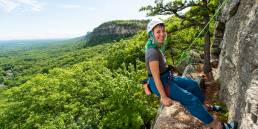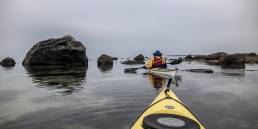The Northeast is home to some of the best trad and sport climbing in the country, and the options continue to grow with new areas being developed. With this great privilege comes great responsibility, for all climbers, as our love for the sport can actually play a role in bringing about its demise. As the sport increases in popularity, it is becoming more likely that crags will face access issues due to landowner concerns or environmental deterioration. Luckily, there are dedicated organizations working to maintain our beloved crags, fighting to re-open long-lost places, and educate new climbers about how to climb in a sustainable way so we can all enjoy the rock for years to come. Here are some of the biggest projects improving Northeast climbing right now:
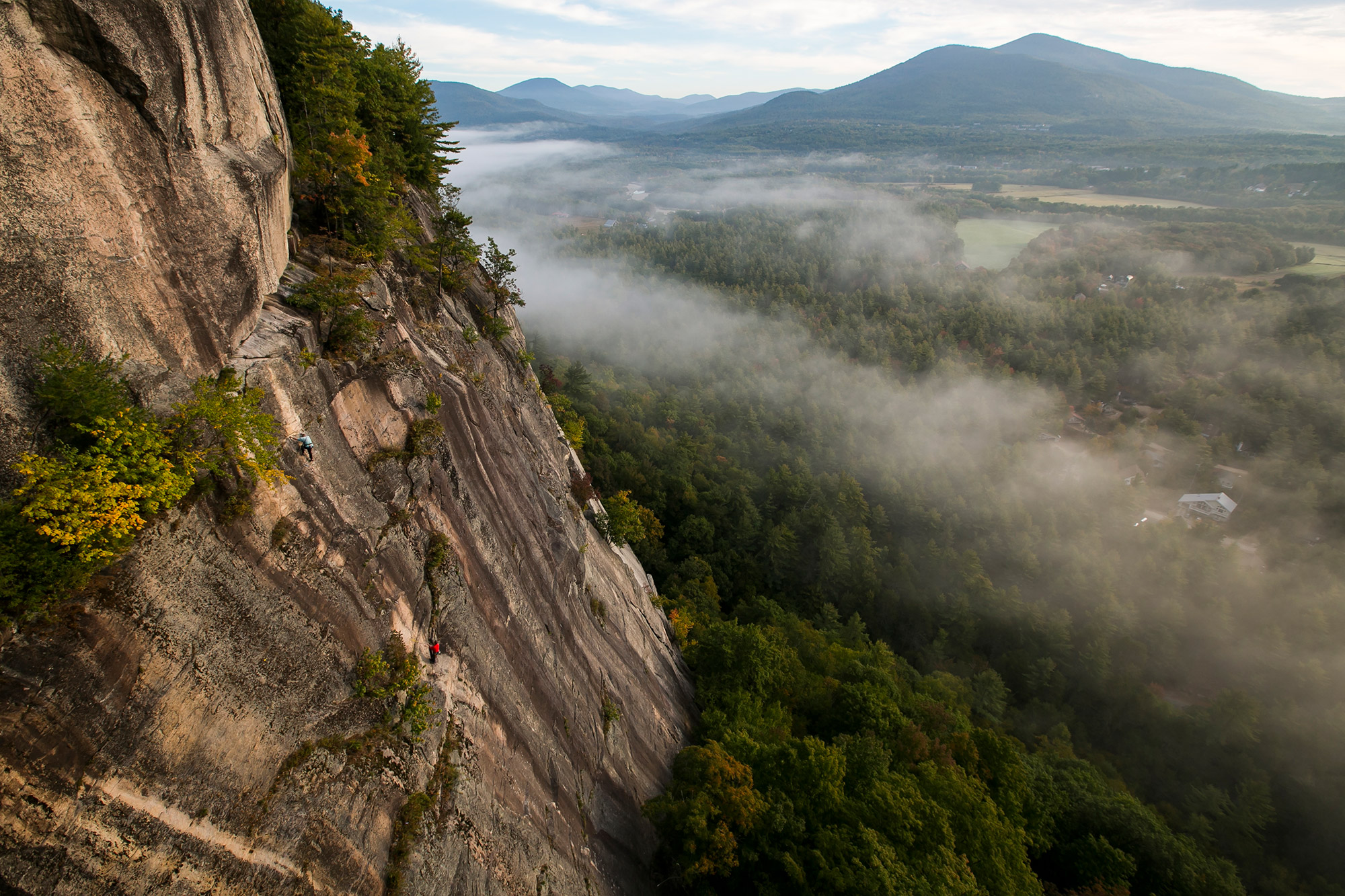
A Cooperative Climbing Gym in the Mount Washington Valley
New Hampshire’s Mount Washington Valley community has grumbled about the lack of a climbing gym in the area for years. During rainy days or over the long winter months, a local indoor climbing spot is a way to stay in shape and connect with friends. Instead, resident climbers have resigned themselves to driving 1.5 hours (and cussing all the way, one might imagine) to the nearest facility.
Eventually, Chelsea Kendrick and Jimmy Baxendell-Young had enough, and they’re now organizing their own cooperative gym in North Conway—the Mount Washington Valley Climbers’ Cooperative, or MWVCC. The local market is too small for a typical commercial operation, with a cumulative population of 20,000 people between the eight towns of Conway, Bartlett, Jackson, Madison, Eaton, Ossipee, Tamworth, and Fryeburg. They decided to engage the climbing community in creating a coop, to great success; The yet-to-exist gym already has over 75 paying members, well on its way to covering the cost of operations once it opens. The 2,000 square feet will provide bouldering and training, as well as a community gathering space. And because it is a cooperative, all members have a say in the direction of the project. If, say, enough people want to offer dry-tooling, it is in the cards for the future.
If you frequent the MWV for ice climbing or skiing in the winter, or hiking in the summer, and want to support the effort, consider becoming a member, donating, or joining their upcoming fundraising event on May 21.
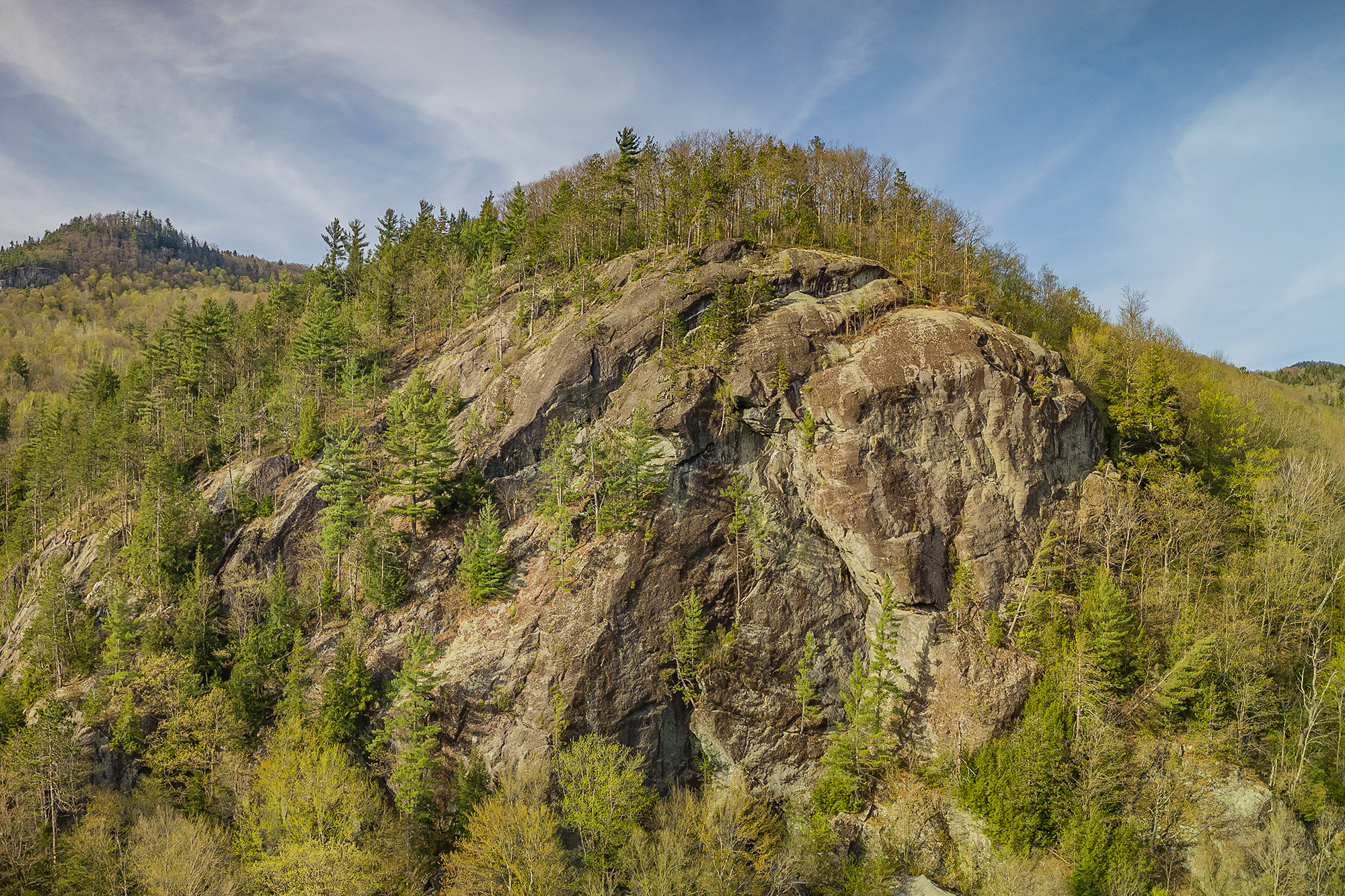
Reopening Vermont’s Hardest Crag
Bolton Dome, just 30 minutes from Burlington, was once one of the most popular cliffs in Vermont, until it was closed in 1990 due to concerns from the private landowner. For decades, access was closed off to dozens of high-quality crack and sport climbs, including the region’s only 5.13 trad route and the state’s highest concentration of 5.12-s. Through it all, the Climbing Resource Access Group of Vermont (CRAG-VT) maintained good standing with the land owners, and early last year the organization was able to purchase the area with help from the Access Fund, in what constitutes Access Fund’s largest Climbing Conservation Loan to date. There is plenty of work to be done: The loan must be paid back, a parking lot needs to be built, and various legal fees to be covered.
CRAG-VT had previously secured 5 other crags in Bolton, making the Dome the newest and most significant addition. Overall, the organization works to protect Vermont’s vulnerable climbing areas, build long-term relationships with landowners, and develop the areas with responsible stewardship. Now that Bolton is protected, there is a cornucopia of potential for new routes for climbers to enjoy for generations. You can support their effort by becoming a member, donating, or joining the Bolton Dome Launch Party! on May 18.
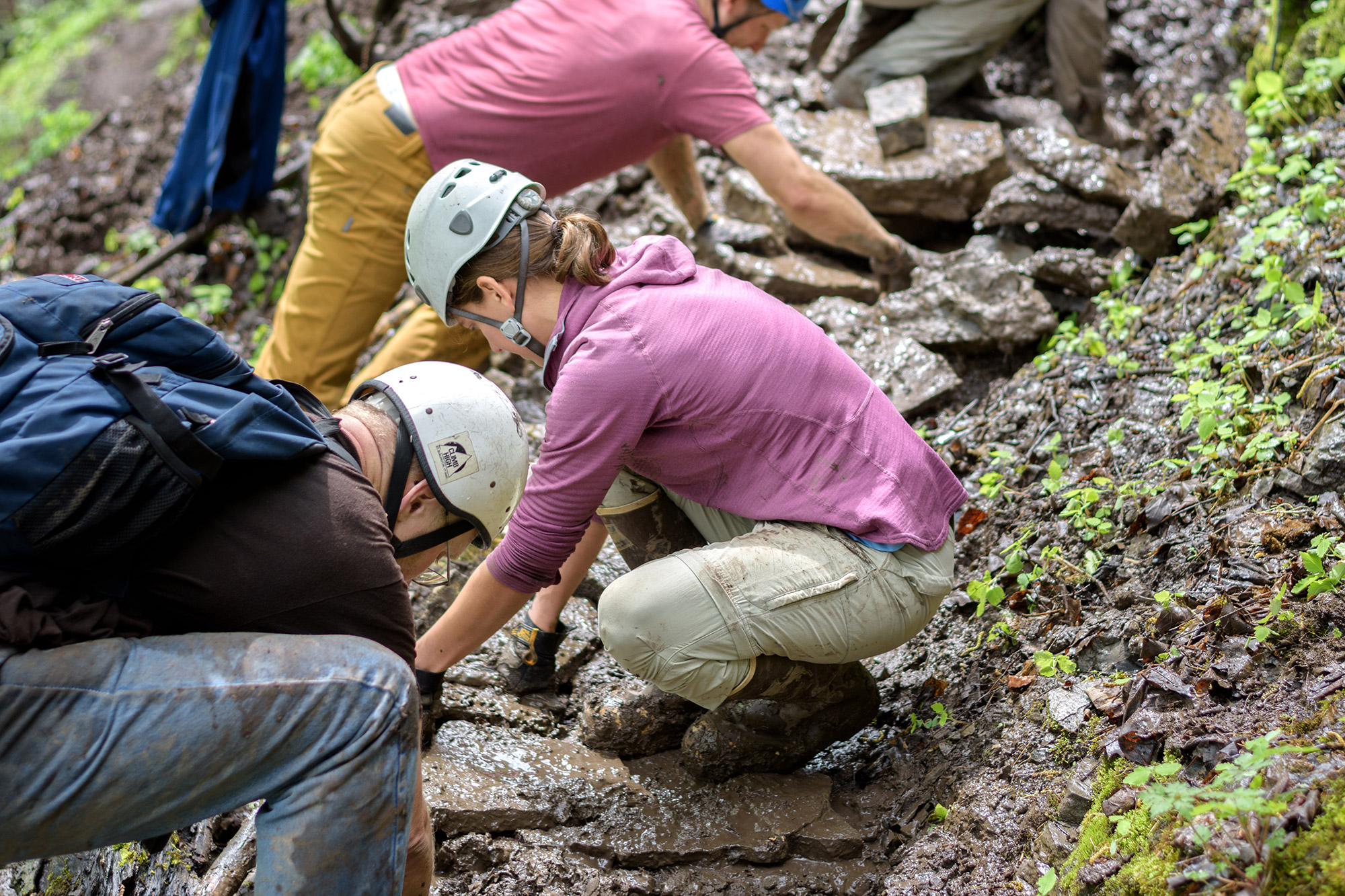
A Sport Crag for New York’s Capital Region
Opened in July of 2017, the Helderberg Escarpment at New York’s John Boyd Thacher State Park is the newest sport climbing haven in the Northeast, and only the third New York State Park to allow climbing (Minnewaska and Harriman being the others). Located 20 minutes from Albany, Thacher sits between the ‘Gunks, 75 miles south, and the Adirondacks, 120 miles north, and is much closer than Rumney, New Hampshire, for New Yorkers. The area services the massive population in New York’s Capital Region who were once stuck with long drives in many directions in order to climb. There are currently about 65 routes ranging from 5.6 to 5.12a, and they will appeal to gym enthusiasts as most climbs are roughly 50 feet high, with none longer than 90′.
What makes the Thatcher Climbing Coalition’s approach special is that they spent 5 years negotiating a climbing management plan with the state in order to demonstrate commitment to success and long-term cooperation. So far, it’s been a rousing success and may serve as a model for partnerships between climbers and parks around New York, and the country.
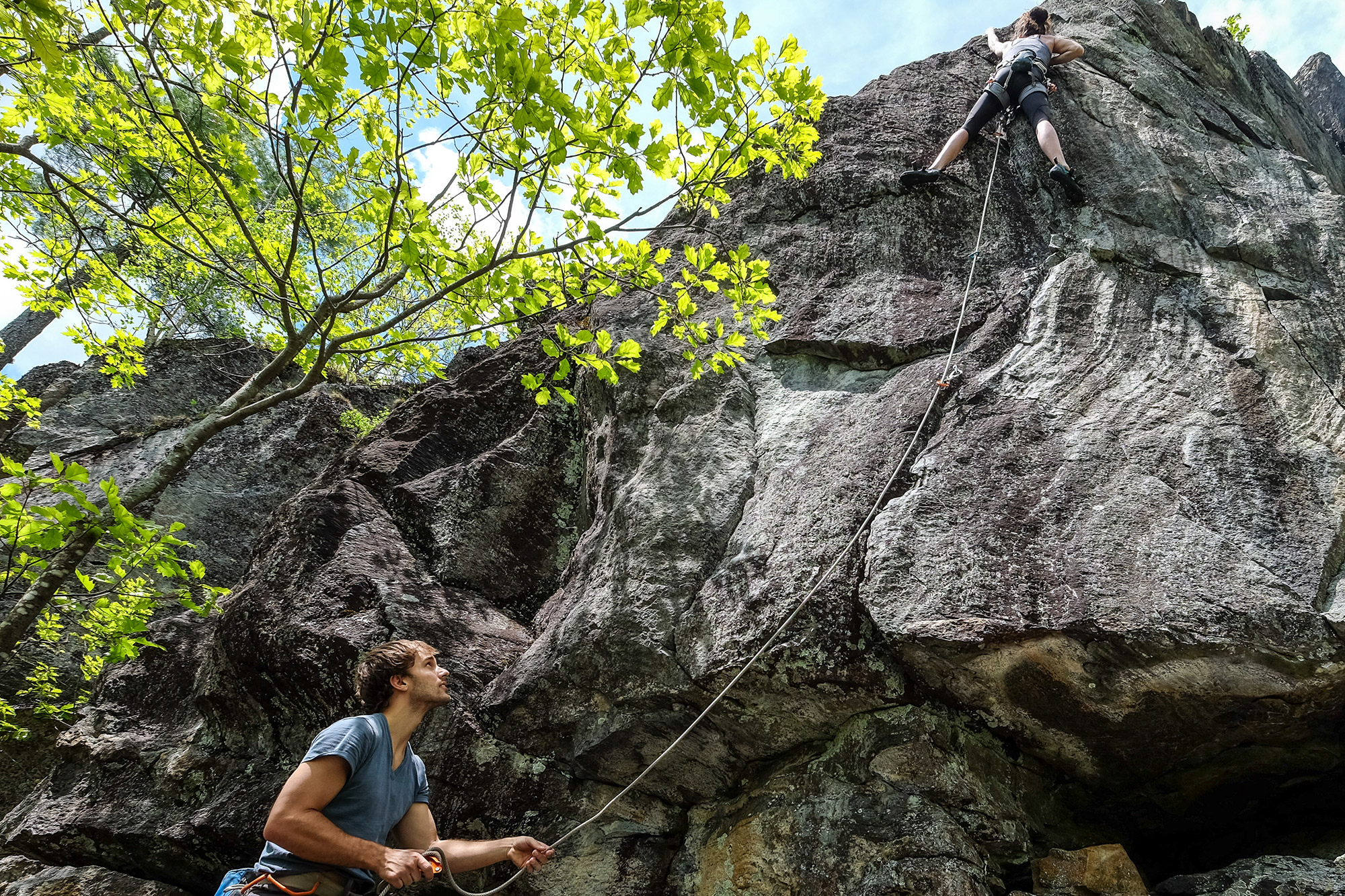
Keep the Northeast’s Premier Crag Pristine
Rumney’s wild popularity is also a cause of environmental damage, a common narrative for highly trafficked climbing areas. The Rumney Climbers’ Association aims to prevent the high usage from diminishing the experience of the 38 cliffs by getting ahead of the issues, which include soil erosion, deteriorating infrastructure, and unsafe climbing conditions. “We are tackling the problem before it’s too big, because there is a tipping point [in these situations],” says Travis Rubury, a board member with the organization. This year, RCA and the Access Fund are performing stewardship projects at three of the most popular areas: Orange Crush, Meadows Crag, and the uber-accessible Parking Lot Wall. They will construct retaining walls, install stairs, and further secure the trails to ensure they are sustainable for the long term.
Rumney has become an international draw, attracting the likes of Alex Megos in 2017 when he remarkably sent Jaws II in only three attempts. The route is one of only four 5.15s in the U.S., and the only one of its grade east of the Rocky Mountains. This world-class area came about through a lot of hard work, much of it performed by the RCA since the early 90s. If you’d like to support their efforts, you can become a member, donate to the restoration efforts, volunteer, or join the American Alpine Club Rumney’ Craggin’ Classic later this year.
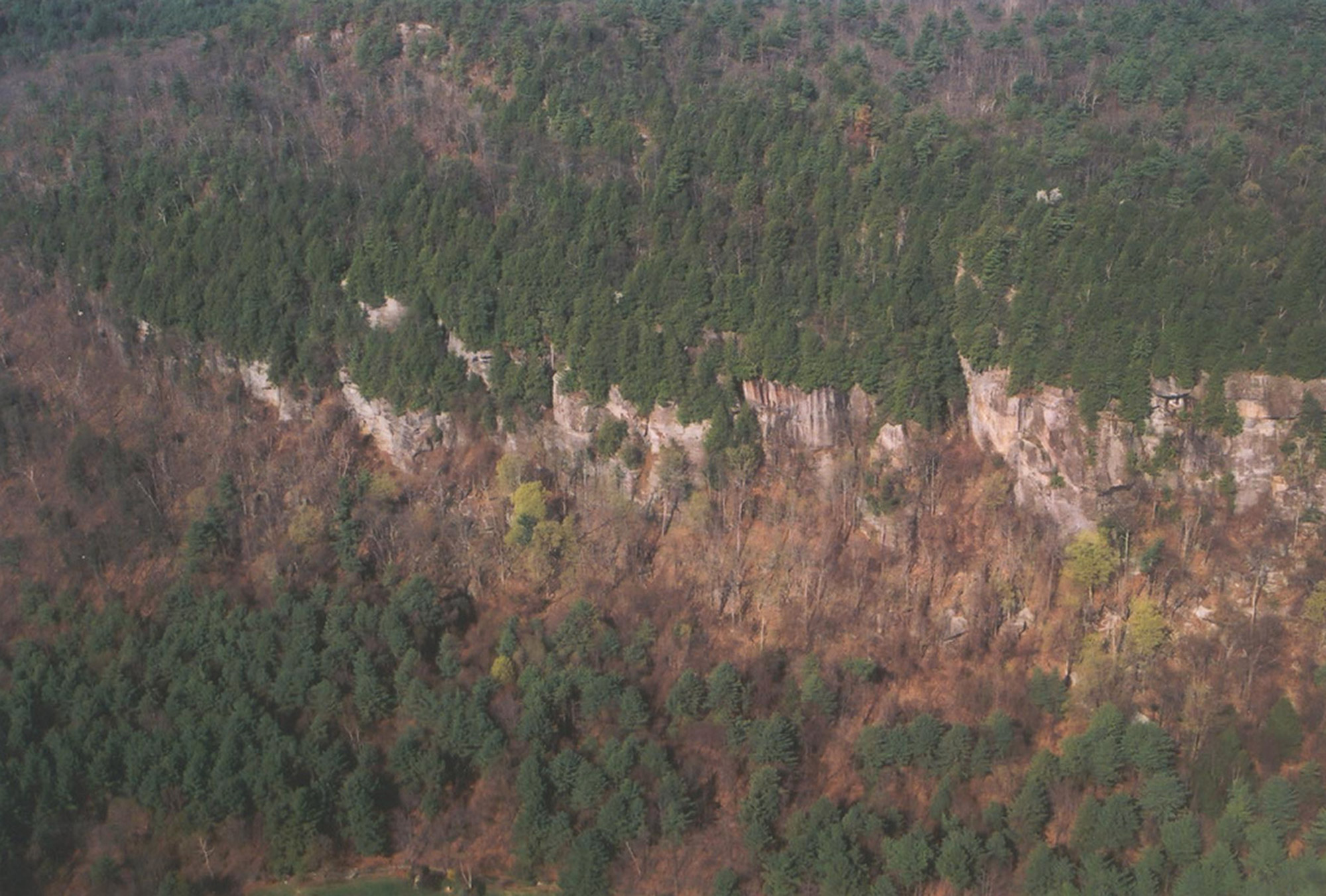
Fixing the Parking Situation in Western Massachusetts
Farley Ledge has experienced its share of contestations over the decades, from being closed four times in the early 2000s to notorious bolt chopping. The situation remains precarious as most of the routes are on private land. “Climbing is unique in that it is resource-dependent. We need this cliff, we can’t [easily] have another. Not a lot of sports are so tied to topography,” notes Wayne Burleson, President of WMCC. While tensions have been soothed over the years, access is not assured. These days, the primary challenge is parking (be warned: Do not park on Route 2). The Western Massachusetts Climbers’ Coalition purchased roadside land (with the help of Access Fund) in 2008 and opened a 20-space parking lot. They are exploring options for additional parking areas.
Farley has a certain mystique for two reasons: One, trad and sport routes are delightfully interspersed on the cliffs as the original developers maintained an ethic to not bolt what could be climbed traditionally. And two, you won’t find any information about the routes (and no guidebook, of course), the result of a policy agreement set up with landowners back in 2007. While this offers intrigue, it also makes it harder for the WMCC to educate climbers about local ethics and share the history, while eliminating a potential revenue stream to help fund future efforts. The coalition has been hard at work since 2000 and is one of the few areas where you don’t have to pay for access. If you want to support this important crag, become a member, donate, volunteer, and definitely don’t park on Route 2.
Aaron Gerry
Aaron Gerry is a freelance writer who spent the last year traveling and climbing through Eastern Europe. He’s a born-and-raised Massachusetts man who’s keen on trail running, hiking, and climbing. You can follow his travels at aarongerry.com.
Related Posts
April 24, 2024
What to Bring When Road Tripping with Your Dog
Prepare for the ultimate road trip with…



